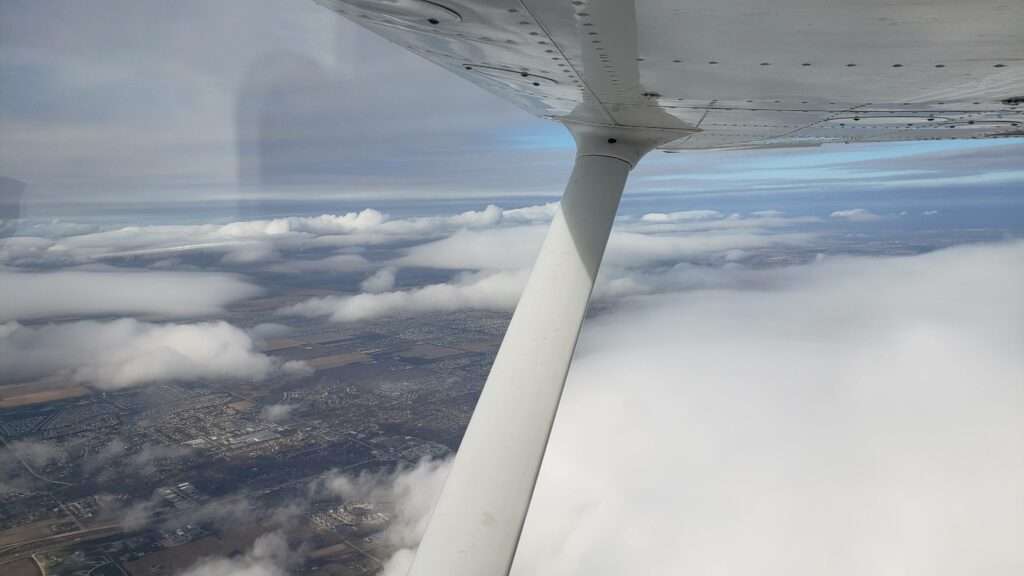Aircraft icing & ice represents one of the greatest hazards to pilots, especially of smaller aircraft.
As we witness shifting climate patterns, predicting when icing will occur is becoming less straightforward: even experienced pilots run the risk of being caught out.
It’s therefore essential to understand the different types of ice that can form on aircraft, the differing levels of severity of aircraft ice, and the impact these can have on flying conditions.
Jerry Jordan, VP Special Projects at CAV Systems, specialists in aircraft anti-icing, explains.
Understanding The Ice

Nearly all icing occurs in supercooled clouds that contain liquid drops below 0°C (32°F), which freeze on contact and adhere to the cold solid surface of the airframe of an aircraft.
Liquid water (supercooled drops) can exist in the atmosphere to -40°C, and freezing rain or drizzle pose the greatest threat; icing up an airframe and distorting aerodynamics in a matter of minutes.
Clear / Glaze Ice
Ice, sometimes clear and smooth, but usually containing some air pockets, which results in a lumpy translucent appearance.
[monsterinsights_popular_posts_inline]
Glaze ice results from supercooled drops/droplets striking a surface but not freezing rapidly on contact.
Glaze ice is denser, harder, and sometimes more transparent than rime ice. Factors, which favor glaze formation, are those that favor slow dissipation of the heat of fusion (i.e., slight supercooling and rapid accretion).
With larger accretions, the ice shape typically includes “horns” protruding from unprotected leading edge surfaces.
It is the ice shape, rather than the clarity or color of the ice, which is most likely to be accurately assessed from the cockpit.
The terms “clear” and “glaze” have been used for essentially the same type of ice accretion, although some reserve “clear” for thinner accretions which lack horns and conform to the airfoil.
Rime Ice
A rough, milky, opaque ice formed by the rapid freezing of supercooled drops/droplets after they strike the aircraft. The rapid freezing results in air being trapped, giving the ice its opaque appearance and making it porous and brittle. Rime ice typically accretes along the stagnation line of an airfoil and is more regular in shape and conformal to the airfoil than glaze ice. It is the ice shape, rather than the clarity or color of the ice, which is most likely to be accurately assessed from the cockpit.
Mixed Ice
Simultaneous appearance or a combination of rime and glaze ice characteristics.
Since the clarity, color, and shape of the ice will be a mixture of rime and glaze characteristics, accurate identification of mixed ice from the cockpit may be difficult.
Ice Detection

As important as on-the-ground ice protection and preparation is, it is essential to have the ability to detect when ice build-up is happening.
That way you can assess the level of threat that it could pose to the aircraft and help forecast the progress of the rest of the flight.
There are four categories of intensity of accretion:
1. Light
The rate of accumulation requires occasional cycling of manual deicing systems** to minimize ice accretions on the airframe. A representative accretion rate for reference purposes is 1/4 inch to one inch (0.6 to 2.5 cm) per hour * on the outer wing. The pilot should consider exiting the condition.***
2. Moderate
The rate of accumulation requires frequent cycling of manual deicing systems ** to minimize ice accretions on the airframe. A representative accretion rate for reference purposes is 1 to 3 inches (2.5 to 7.5 cm) per hour * on the outer wing. The pilot should consider exiting the condition as soon as possible.***
3. Heavy
The rate of ice accumulation requires maximum use of the protection systems to minimize accretions on the airframe. A representative accretion rate for reference purposes is more than 3 inches (7.5 cm) per hour * on the outer wing. Immediate exit from the conditions should be considered.***
4. Severe
The rate of accumulation is such that protection systems fail to remove the accumulation of it and it accumulates in locations not normally prone to icing, such as areas aft of protected surfaces and any other areas identified by the manufacturer. Immediate exit from the condition is necessary.****
Anti-Icing or De-Icing?

One of the most common questions we are asked is the difference between anti-icing and de-icing systems. In short, anti-icing, including our TKS system, prevents it from forming providing free leading edges.
De-icing, on the other hand, is an entirely reactive system that is only effective once it has already accreted, disrupting the aerodynamic flow, affecting flight control, increasing drag and lowering efficiency.
Pneumatic de-icing systems, such as boots, are an energy efficient way to remove most of the build-up during the de-icing cycle. In most icing encounters the aircraft must be flown with an “intercycle ice shape” that remains in place on all leading edge surfaces.
For an aircraft that is reliably equipped for all icing scenarios, a TKS anti-icing system continuously prevents the formation of the phenomena for all protected surfaces, including: wings, tails, propeller, windshield and struts.
The system is also capable of de-icing, as TKS fluid chemically breaks the bond between the element and frame, allowing the system to shed any accumulated and prevent any build-up thereafter.
* These rates can be measured by a suitable icing rate meter.
** It is expected that deicing or anti-icing systems will be activated and operated continuously in the automatic mode, if available, at the first sign of ice accumulation, or as directed in the Airplane Flight Manual. Occasional and frequent cycling refers to manually activated systems.
*** It is assumed that the aircraft is approved to fly in the cited icing conditions. Otherwise, immediate exit from any of these intensity categories is required by regulations.
**** Severe icing is aircraft dependent, as are the other categories of icing intensity. Severe icing may occur at any ice accumulation rate when the icing rate or ice accumulations exceed the tolerance of the aircraft. Icing certification implies an increased tolerance to icing intensities up through heavy.

Click the banner to subscribe to our weekly newsleter.









